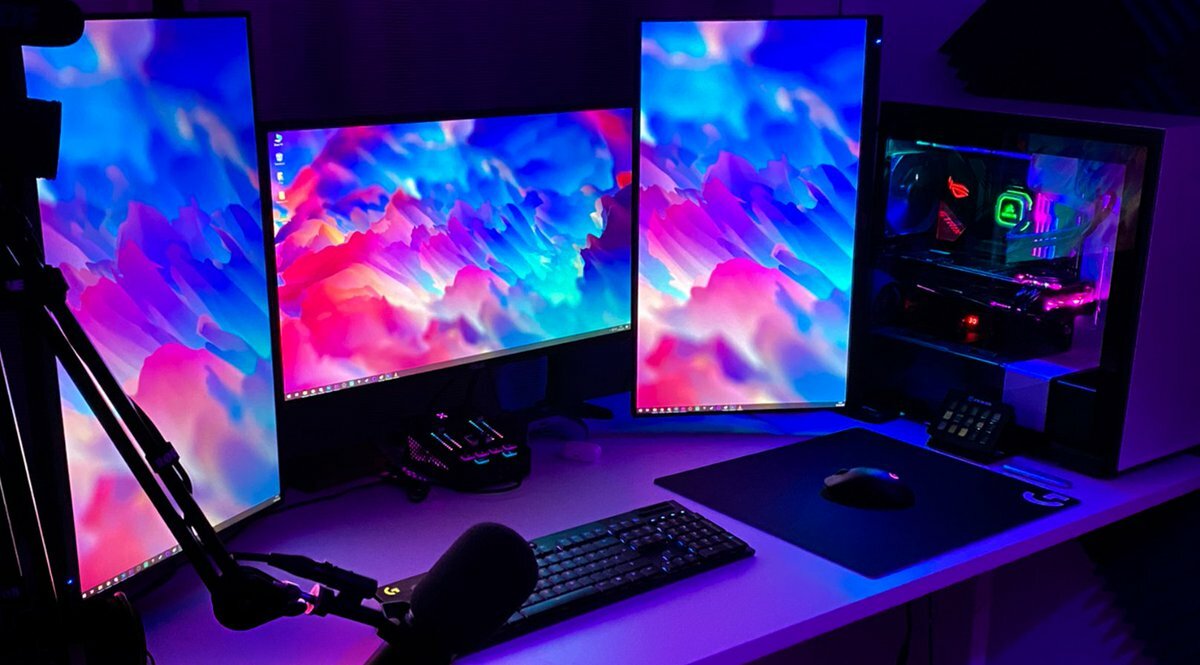The Lines Between Gaming and Reality are Being Blurred
In the digital age, gaming has become an immersive experience that blurs the lines between virtual worlds and reality. With advancements in technology, gaming consoles, virtual reality, augmented reality, and other innovations have transformed the way we play and interact with games. This article explores the exciting developments in gaming and how they are bringing players closer to a realistic and engaging experience.
Gaming has evolved from simple pixelated graphics to incredibly immersive experiences. Technological advancements have pushed the boundaries of what's possible, bringing virtual worlds closer to reality. This article delves into the exciting developments that have blurred the lines between gaming and reality.
Gaming Consoles: The Gateway to Virtual Realms
Gaming consoles have been the traditional medium for gaming, acting as a bridge between players and virtual realms. From the early days of Atari to the latest generation of consoles like PlayStation and Xbox, gaming consoles have continually pushed the boundaries of what's possible in gaming.
Virtual Reality: Stepping into Another Dimension
Virtual reality (VR) has revolutionized gaming by transporting players into entirely immersive digital worlds. Through specialized VR headsets and motion-tracking devices, players can experience games from a first-person perspective, where their actions and movements in the real world translate into the virtual space.
Augmented Reality: Enhancing Real-world Experiences
Augmented reality (AR) has gained prominence through popular mobile games like Pokémon Go. AR overlays digital elements onto the real world, enhancing the player's perception of their surroundings. By blending virtual content with the physical environment, AR creates unique and interactive gaming experiences.
Cloud Gaming: Accessing Games Anywhere, Anytime
Cloud gaming has emerged as a game-changer, allowing players to stream games directly to their devices without the need for high-end hardware. With cloud gaming platforms like Google Stadia and NVIDIA GeForce Now, players can access a vast library of games on various devices, eliminating the need for expensive gaming setups.
Mobile Gaming: Gaming on the Go
Mobile gaming has seen explosive growth due to the widespread availability of smartphones. Games optimized for mobile platforms offer a convenient and accessible way to indulge in gaming anytime, anywhere. From casual puzzle games to graphically stunning titles, mobile gaming caters to a broad audience.
Esports: Competitive Gaming on a Global Scale
Esports has transformed gaming into a professional and highly competitive industry. Players and teams compete in organized tournaments, showcasing their skills in popular games like League of Legends, Counter-Strike: Global Offensive, and Dota 2. Esports events draw massive audiences and offer substantial prize pools, elevating gaming to a new level of recognition.
Gaming Peripherals: Enhancing Gameplay with the Right Tools
Gaming peripherals play a crucial role in enhancing the gaming experience. High-quality gaming keyboards, mice, and controllers offer precise controls, ergonomic designs, and customizable features. These peripherals allow players to fine-tune their gaming setup for optimal comfort and performance.
Gaming Laptops: Powerhouses for Portable Gaming
Gaming laptops provide a portable solution for gamers who desire the flexibility to play on the go. With powerful processors, dedicated graphics cards, and high refresh rate displays, gaming laptops offer a premium gaming experience in a compact form factor.
Gaming PCs: Unleashing the Full Potential of Gaming
Gaming PCs remain the ultimate choice for hardcore gamers who seek unparalleled performance. These custom-built machines boast top-of-the-line components, including high-end graphics cards, processors, and cooling systems. Gaming PCs allow players to enjoy games at their highest settings, delivering stunning visuals and smooth gameplay.
Graphics Processing Unit: Fueling Visual Excellence
Graphics Processing Units (GPUs) are the workhorses behind rendering lifelike visuals in games. These powerful processors handle complex calculations, enabling realistic graphics, lighting effects, and intricate details. As GPUs continue to advance, games are becoming increasingly immersive and visually breathtaking.
Ray Tracing: Realistic Lighting and Reflections
Ray tracing is a rendering technique that simulates the behavior of light in real-time. By tracing the path of individual rays of light, games can achieve lifelike lighting, shadows, and reflections. Ray tracing enhances the visual fidelity of games, making virtual worlds appear more realistic and immersive.
High Refresh Rate Displays: Fluid and Responsive Gameplay
High refresh rate displays offer smoother and more responsive gameplay. Traditional monitors typically have a 60Hz refresh rate, but gaming monitors now feature higher refresh rates, such as 144Hz or even 240Hz. These displays reduce motion blur and input lag, providing players with a competitive edge.
Game Streaming: Playing Without the Need for Downloads
Game streaming services like Twitch and YouTube Gaming have revolutionized how gamers share their gameplay experiences. Players can stream their gameplay in real-time, allowing others to watch and interact with them. This has created vibrant communities and opened up new avenues for content creation and engagement.
Game Engines: The Backbone of Interactive Experiences
Game engines are the software frameworks that power the creation and development of games. Engines like Unity and Unreal Engine provide developers with powerful tools and resources to build immersive worlds, realistic physics, and engaging gameplay mechanics. These engines drive innovation in the gaming industry, pushing the boundaries of what games can deliver.
As technology continues to evolve, the lines between gaming and reality are increasingly blurring. Gaming consoles, virtual reality, augmented reality, cloud gaming, and other advancements are transforming gaming into an incredibly immersive experience. Players can step into virtual realms, compete on a global stage, and enjoy games anywhere, anytime. The future of gaming holds even more exciting possibilities as artificial intelligence, motion capture, and haptic feedback further bridge the gap between the virtual and the real.






 English (US) ·
English (US) ·